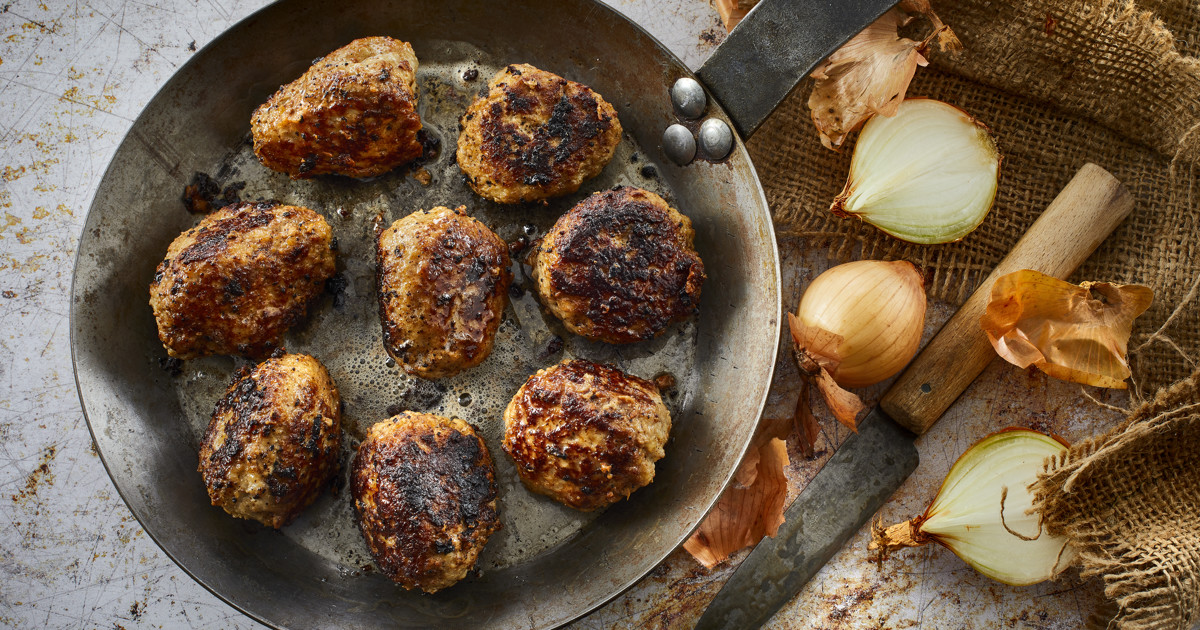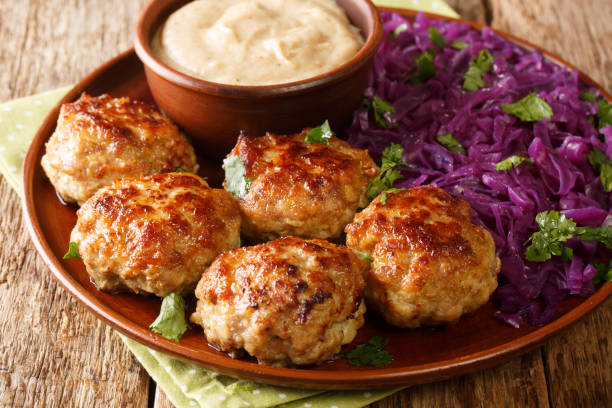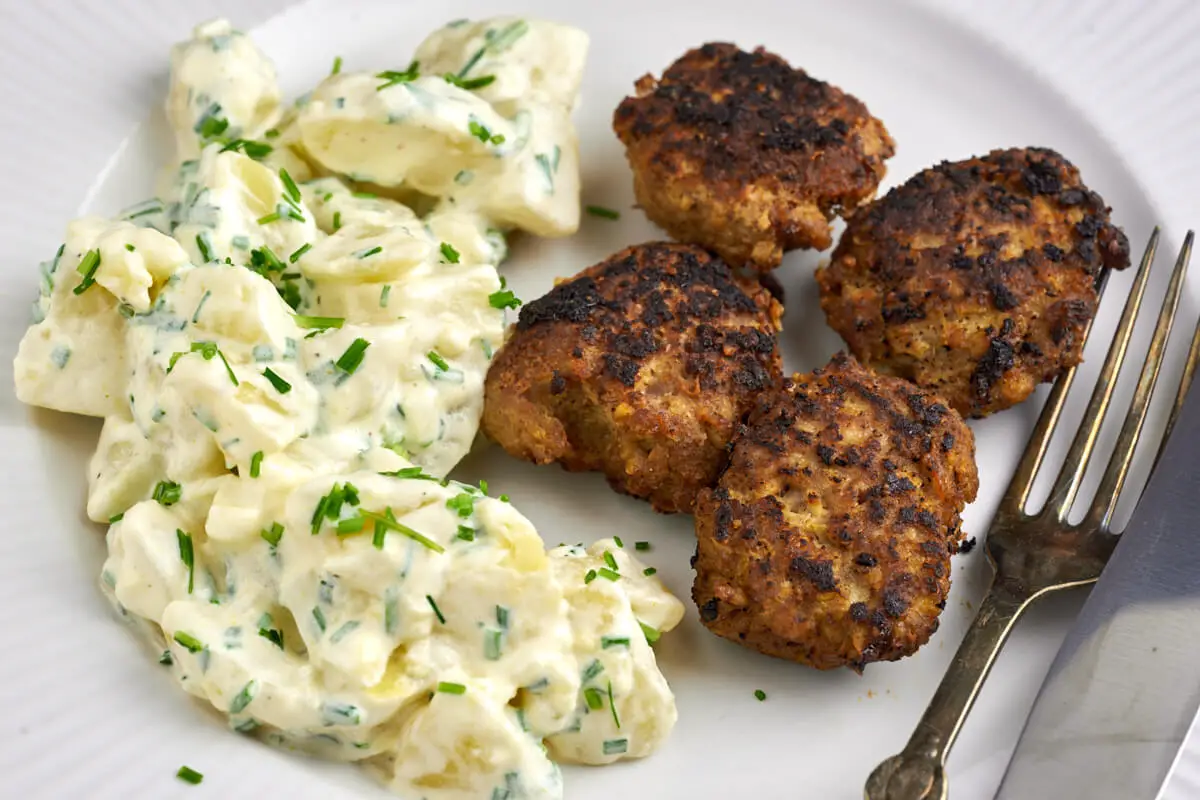Frikadeller Culinary Traditions: Pleasures of Danish Cuisine

Frikadeller, a traditional Danish dish, holds a special place in the hearts and palates of many. These flavorful meatballs, often enjoyed as a comfort food, are cherished for their simplicity, versatility, and rich cultural heritage. In this article, we’ll delve into the origins of frikadeller, its ingredients, preparation methods, and how it has become a beloved staple in situstoto.

Savor the Flavor: Exploring the Delightful World of Frikadeller
Origins of Frikadeller:
Frikadeller has roots in Denmark’s culinary history, dating back centuries. The dish likely evolved from German and Scandinavian meatball recipes, with each region adding its own unique twist over time. Frikadeler has since become an integral part of Danish gastronomy, enjoyed by people of all ages and backgrounds.
Ingredients and Preparation:
The basic ingredients for frikadeller include ground meat (typically a combination of pork and beef), onions, eggs, breadcrumbs, milk, salt, pepper, and sometimes spices like nutmeg or allspice for added flavor. These ingredients are mixed together to form a smooth, pliable mixture, which is then shaped into small, flattened meatballs.
Cooking Methods:
Frikadeller can be cooked using various methods, including frying, baking, or simmering. Traditionally, they are pan-fried in butter or oil until golden brown and cooked through. This method results in crispy, caramelized exteriors and juicy, tender interiors, imparting a delightful contrast of textures.
Variations and Accompaniments:
While the basic recipe for frikadeller remains consistent, there are numerous variations and regional adaptations throughout Denmark. Some recipes call for the addition of grated vegetables like carrots or potatoes, while others incorporate herbs such as parsley or dill for added freshness. Frikadeller are often served with classic accompaniments like creamy mashed potatoes, gravy, lingonberry jam, pickled cucumbers, and crisp salad greens.
Cultural Significance:
Beyond its culinary appeal, frikadeller holds cultural significance in Denmark. It is frequently enjoyed at family gatherings, festive celebrations, and holiday feasts, symbolizing warmth, comfort, and togetherness. Frikadeller recipes are often passed down through generations, preserving cherished traditions and memories.
Modern Interpretations:
In recent years, chefs and home cooks alike have experimented with modern twists on the classic frikadeller recipe. These interpretations may include alternative meat options such as chicken or turkey, gluten-free breadcrumbs, or creative flavor combinations inspired by global cuisines. Despite these innovations, the essence of Frikadeler as a wholesome, comforting dish remains unchanged.
Conclusion:
Frikadeller embodies the essence of Danish culinary heritage, offering a taste of tradition and nostalgia with every bite. Whether enjoyed as a hearty meal with loved ones or savored as a simple pleasure on a cozy evening, Frikadeler continues to hold a special place in Danish hearts and kitchens. Its enduring popularity speaks to the timeless appeal of comforting, homemade fare that transcends borders and generations.

Why Frikadeller is Popular in Indonesia
Frikadeller, a traditional Danish dish, has gained popularity in Indonesia for several reasons, despite being a foreign cuisine. Here’s why frikadeller is well-loved in Indonesia:
- Delicious Taste: Frikadeller offers a delightful blend of flavors that appeal to Indonesian taste buds. Its juicy and savory meatballs, seasoned with herbs and spices, provide a satisfying culinary experience that resonates with Indonesian palates.
- International Culinary Variety: Indonesia is known for its love of diverse international cuisines. Frikadeller adds an exciting option among popular foreign dishes in Indonesia, such as pizza, pasta, sushi, and more. Its unique flavor profile and texture offer a refreshing change for those seeking culinary adventures.
- Availability of Ingredients: The ingredients used in making Frikadeler , such as minced meat, onions, eggs, and breadcrumbs, are readily available in Indonesian markets and supermarkets. This accessibility makes it easy for people to try making frikadeller at home or for restaurants to include it in their menus.
- Introduction Through Restaurants and Social Media: International restaurants in Indonesia often feature Frikadeler on their menus, introducing the dish to a wider audience. Additionally, social media plays a role in popularizing frikadeller, with numerous posts and videos showcasing its preparation and enjoyment.
Appeal as a Family Dish: Frikadeler is a dish that can be enjoyed by the whole family. Its versatility and comforting taste make it a popular choice for family meals and gatherings in Indonesia, fostering a sense of togetherness and enjoyment.
While not as ubiquitous as local Indonesian dishes, frikadeller has found a place in the hearts of Indonesians who enjoy exploring diverse cuisines from around the world. Its delicious taste, accessibility of ingredients, and versatility make it a favored option among international dishes available in Indonesia.
A Culinary Journey: Crafting Perfect Frikadeller
Frikadeller, the beloved Danish meatballs, are more than just a dish – they’re a culinary delight that brings comfort and joy to those who indulge in them. With their juicy texture and savory flavors, Frikadeler are a favorite in Denmark and beyond. In this article, we’ll embark on a culinary journey to discover the art of making perfect Frikadeler at home.
Ingredients:
To make frikadeller, you’ll need the following ingredients:
- 500 grams of minced meat (a combination of pork and beef works well)
- 1 onion, finely chopped
- 1 egg
- 3 tablespoons of breadcrumbs
- 2-3 tablespoons of milk
- Salt and pepper to taste
Optional: a pinch of nutmeg or allspice for added flavor
Prepare the Mixture:
- In a large mixing bowl, combine the minced meat, chopped onion, egg, breadcrumbs, and milk.
- Season the mixture with salt, pepper, and any optional spices you desire.
- Use your hands to mix everything together until well combined. The mixture should be moist but still hold its shape.
Shape the Meatballs:
- Take a small handful of the meat mixture and roll it between your palms to form a smooth, round meatball.
- Flatten the meatball slightly to form a disc-shaped patty. Repeat this process until all the mixture has been used.

Cook the Frikadeller:
- Heat a skillet or frying pan over medium heat and add a little oil or butter to coat the bottom.
- Once the pan is hot, add the frikadeller in batches, making sure not to overcrowd the pan.
- Cook the frikadeller for 4-5 minutes on each side, or until they are golden brown and cooked through.
- You may need to adjust the heat to prevent them from burning or cooking too quickly.
Serve and Enjoy:
- Once cooked, remove the frikadeller from the pan and place them on a plate lined with paper towels to drain any excess oil.
- Serve the Frikadeler hot with your favorite accompaniments. They pair well with creamy mashed potatoes, lingonberry jam, pickled cucumbers, and a crisp salad.
Tips for Success:
- Be sure not to overmix the meat mixture, as this can result in tough meatballs.
- For extra flavor, you can add grated vegetables like carrots or potatoes to the mixture.
- To ensure even cooking, make sure the Frikadeler are roughly the same size and thickness.
- f you’re unsure if the Frikadeler are cooked through, you can test one by cutting it in half to check for any pinkness in the center.
Conclusion:
Making frikadeller at home is a rewarding experience that allows you to enjoy the rich flavors of Danish cuisine in the comfort of your own kitchen. With simple ingredients and easy-to-follow steps, you can create delicious Frikadeler that will delight your taste buds and impress your family and friends. So roll up your sleeves, gather your ingredients, and embark on a culinary adventure to create the perfect frikadeller today!
Read More Article About “Tikoy Through Generations: Traditional Practices and Modern Twists“




Leave a Comment